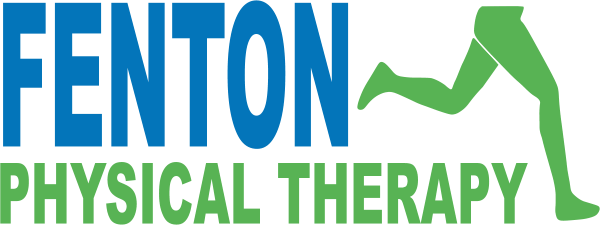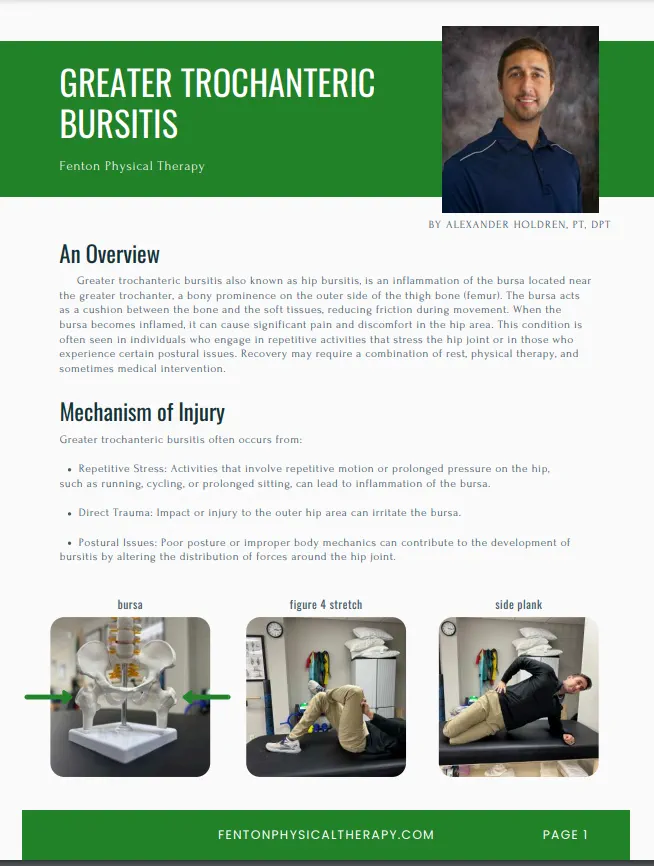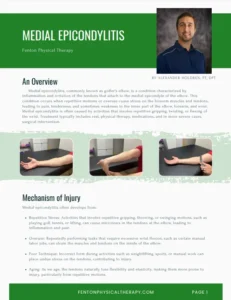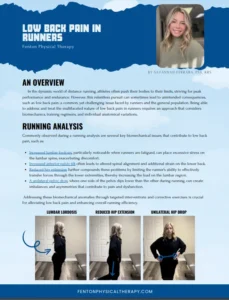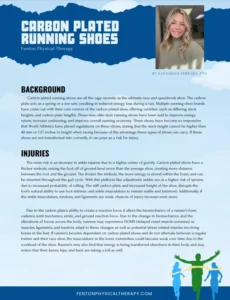An Overview
Greater trochanteric bursitis also known as hip bursitis, is an inflammation of the bursa located near the greater trochanter, a bony prominence on the outer side of the thigh bone (femur). The bursa acts as a cushion between the bone and the soft tissues, reducing friction during movement. When the bursa becomes inflamed, it can cause significant pain and discomfort in the hip area. This condition is often seen in individuals who engage in repetitive activities that stress the hip joint or in those who experience certain postural issues. Recovery may require a combination of rest, physical therapy, and sometimes medical intervention.
Mechanism of Injury
- Greater trochanteric bursitis often occurs from:
Repetitive Stress: Activities that involve repetitive motion or prolonged pressure on the hip, such as running, cycling, or prolonged sitting, can lead to inflammation of the bursa. - Direct Trauma: Impact or injury to the outer hip area can irritate the bursa.
- Postural Issues: Poor posture or improper body mechanics can contribute to the development of bursitis by altering the distribution of forces around the hip joint.
Recovery Timeline
- (1-2 Weeks): Initial phase focuses on managing pain and inflammation. Rest, ice, compression, and elevation (RICE) are recommended. Avoiding activities that exacerbate symptoms is crucial during this period.
- (2-6 Weeks): Gradual introduction of stretching and strengthening exercises to improve hip flexibility and muscle balance. Physical therapy aims to address any postural or movement issues contributing to the bursitis.
- (6-12 Weeks): Emphasis on functional exercises and activity modification to ensure a return to normal activities. Strengthening and stabilizing exercises for the hip and surrounding muscles are key.
- (12 Weeks +): Most individuals experience significant improvement in symptoms, though recovery times can vary based on the severity of the bursitis and adherence to a rehabilitation program.
What to Expect in a Physical Therapy Session
- History and Evaluation: Discussion of your symptoms, activity history, and any factors contributing to the bursitis.
- Physical Examination: Assessment of hip range of motion, strength, and tenderness around the greater trochanter.
- Modalities: Ice, or heat therapy to reduce pain and inflammation.
- Gentle Stretching: Focused on improving flexibility in the hip flexors, hamstrings, and iliotibial band. (figure 4 stretch example on first page)
- Strengthening Exercises: Targeted at improving strength in the hip abductors, glutes, and core muscles to support the hip joint. (side plank example on first page)
- Postural and Biomechanical Education: Guidance on proper posture and body mechanics to prevent future issues.
- Activity Modification: Advice on modifying activities and implementing techniques to reduce stress on the hip.
- Injury Prevention: Strategies to prevent recurrence, including gradual progression in activity intensity and proper technique.
Summary
Greater trochanteric bursitis can be quite painful and often requires a multifaceted approach to recovery. Activities that place repetitive stress on the hip or involve prolonged sitting may need to be adjusted. Physical therapy is typically effective and can help address underlying issues contributing to the condition. Adherence to a comprehensive rehabilitation program, including activity modification and proper technique, is crucial for a successful recovery and prevention of future problems.
